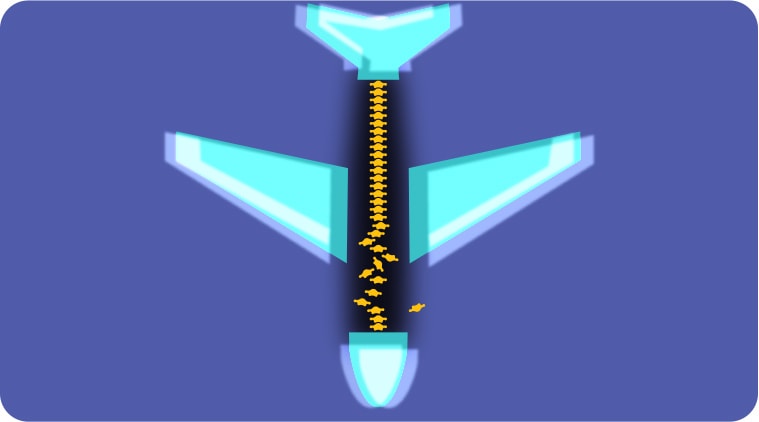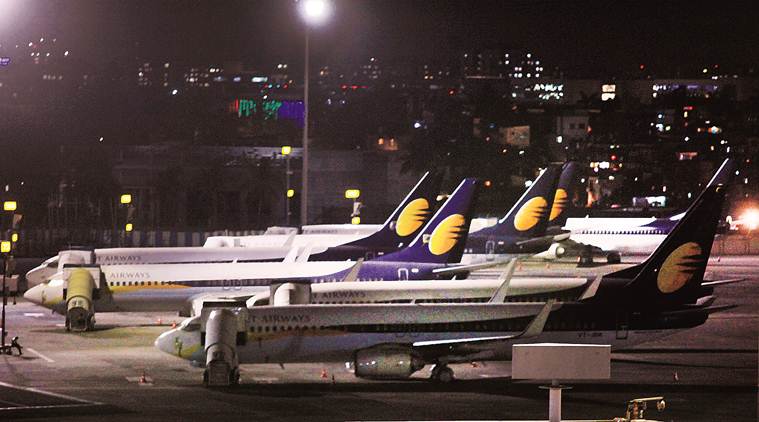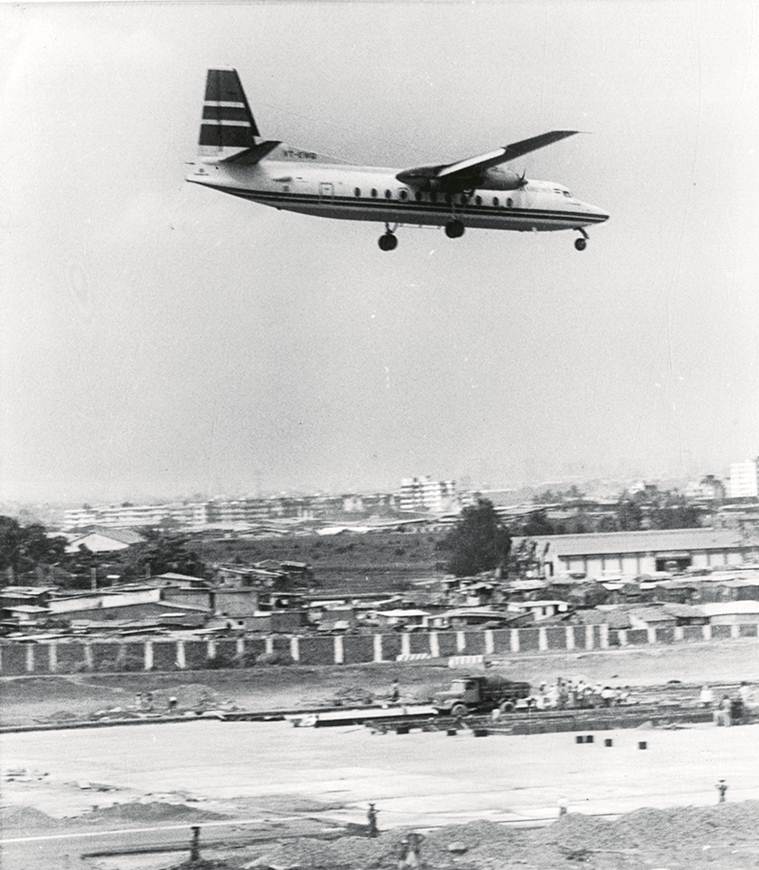
By Parvez Damania
Just last year Jet Airways celebrated its 25th anniversary. It pulled out all the stops in the celebration, heralding the milestone with a swish commemorative logo, and revelled in the fulsome praise lavished on it from all quarters. Notable among all the compliments it basked in — besides the praise for its fleet, crew and service quality — was the hardiness with which it had survived, for decades, a variety of external body blows. Steep hikes in aviation fuel prices, global currency fluctuations, industry challenges and fierce competition, both global and domestic — it had survived all these. Naresh Goyal took a long, deep bow.
It certainly seemed obvious that Jet Airways, like other airlines, had made the most of the vaunted Indian aviation boom. An April 2018 report shows that the sector experienced 42 months of double-digit revenue per kilometre (RPK) growth and the load factor on all airlines were in the 90 per cent range. All the parameters showed a robust and growing aviation environment. All other Indian airlines also reflected growth and income consonant with these numbers.
All this came swiftly crashing to the ground in the beginning of 2019, with a growing degree of aircraft grounded due to non-payment of lease rentals, and then, the death knell: “Suspension of operations”, which is virtually a terminal closure. The airline that billed itself as India’s oldest private airline, and had dominated the Indian skies for two decades, turned out to be a disastrous, hollow organisation, taking things day by day on rapidly dwindling resources and frantically looking for an investor who would pump in money.
Explained | The rise and fall of private airlines
Total closure was imminent and more than 22,000 Jet employees found their paychecks had vanished. Scores of people employed by the many support services met with the same fate. Lessors pulled back their aircraft, leaving Jet Airways with a sad fleet of one Boeing 737 and five ATRs in the end. Rival airlines are now quickly picking up the experienced Jet pilots and engineers, and the peerless cabin crew that were the pride of the airline, reportedly at much lower salaries.
The flood of financial irregularities coming to light was particularly shocking: Jet Airways was in debt in excess of Rs 8,500 crore to Indian banks, the largest exposure was of the State Bank of India. The other Indian banks include the Punjab National Bank, Yes Bank, IDBI, Canara Bank, ICICI Bank, Indian Overseas Bank and Syndicate Bank. Who had approved these loans down the years? Why had more and more good money been thrown after the bad debt for years? Had any promoter guarantees been taken?

Why hadn’t forensic financial audits been conducted? If it was conducted, what are the findings? What actions had been taken by the banks after raids by the Income Tax department on Jet offices last year, which had apparently discovered gross financial management? Above all, what was the full extent of the loss? What about the airline’s statutory dues like provident fund, ESIC, TDS, service tax, GST, etc? What does Jet owe to the Airports Authority of India, Indian Oil and other fuel companies, which are also government bodies?
This is not just a chilling replay of the Kingfisher Airlines debacle, because it is much larger in magnitude. Vijay Mallya had fled to London and was ensconced in some kind of financial immunity, though, here in India, Mallya’s houses, cars, and assets were confiscated. But what was being done to stem this horrific haemorrhaging of public money and is any attempt being made to stop Goyal from leaving India? Was there any plan to impound his array of assets? Did anyone realise that Goyal and the Jet Airways debacle was much larger than Vijay Mallya and Kingfisher Airlines?
Even more chilling in this case was, once again, the fact that the largest component of the financial exposure was to government-owned banks and organisations. Obviously, this was a massive mismanagement of money, not possible without the aid of individuals who had misused their power. Banks, for all purposes, must now supply explanations for a slew of inexplicable decisions made over the years. Crores were disbursed to the airline, but against what collateral? Then there is the bizarre SBI defiance in not declaring the airline an NPA, and insisting it is not an NPA as late as March 25. If Jet is wound up, will the banks really recover any money?
There is so much pontification now about selling the airline. But what is left for a buyer? An airline’s main assets are its aircraft, flying rights, slots, parking rights and its personnel. Parking rights and slots in Mumbai and Delhi, and in cities abroad are priceless assets.
These have now been taken up by Indigo, SpiceJet, Vistara, GoAir and Air Asia in India, and they are not fools to give them up easily.
I may claim a rather unique perspective to an understanding of the Jet Airways situation. I started Damania Airways in 1993, the same year Jet Airways began. But when I saw the writing on the aviation wall a little over two years later, I made an extremely painful decision: I handed the airline, intact, to new investors. At that point, the complications in Indian aviation were so suffocating because of government regulations, no airline could survive without contorting itself into untenable positions.

Many trusted Jet Airways to practice and maintain superior management so that their personal lives are not affected. The agonising plight of Jet Airways staff now could have been avoided. In fact, just recently a finance company froze the savings of Jet staff from their forex debit cards to recover the airline’s outstanding. This scramble to recover monies at the expense of innocents is taking things to a new depth of cruelty.
There is much in the national narrative about getting the airline flying again. The dismaying truth is that this is simply not possible. The airline has been abandoned into the hands of people who just want their money back — banks and lenders.
Jet Airways unfortunately is not coming back. It simply cannot. What is worse, Mallya and Goyal have brought global shame to the Indian aviation industry by making Kingfisher and Jet Airways the laughing stock of the international aviation sector. The damage done will now take years to undo.
Indeed the circus surrounding the deceased airline is now resembling the bizarre sight of a phalanx of medical personnel pretending to resuscitate a deceased patient at the graveyard. All the key management of the airline has resigned. The fleet has gone. The slots and parking bays have been handed over to competitors. The employees have been abandoned. And, the powers that be, including the SBI, are still brazenly prattling on about finding a buyer. The latest supposedly interested party operates out of an industrial gala in Chakala, Andheri, called East Darwin Platform holdings. There is another, a former air passenger service agent, and some other small bidders. These are the kind of unsolicited bidders the banks are reaching out to now.
Jet Airways has, very unfortunately, crashed, Ladies and Gentlemen.
The writer is an aviation expert and founder of Damania Airways